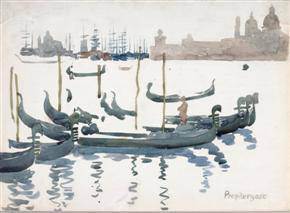
Robert Rauschenberg – Gluts
Robert Rauschenberg: Gluts – Guggenheim Bilbao
Eighteen months after Robert Rauschenberg’s death on May 12, 2008, the Guggenheim MuseumBilbao is organizing a posthumous tribute to this great American artist with the exhibition RobertRauschenberg: Gluts . From February 13 to September 12, 2010, this show will display nearly sixtyartworks that reveal a relatively unknown facet of his work in metal, made possible by generous loansfrom the Rauschenberg Estate and private collections and institutions in several different countries.
]]>
Source: Guggenheim Museum
During a career that spanned over fifty years, Robert Rauschenberg (b. 1925, Texas–d. 2008, Florida)redefined the art of our time and earned a reputation as one of the most prominent artists of the 20thcentury. He was the defining force in contemporary art for nearly sixty years, creating art in a range ofmaterials, media, and techniques more varied than that of any artist of the twentieth or twenty-firstcenturies. For him, painting entailed not only using a brush, but also silkscreening, collaging,transferring, and imprinting, and he did so on the widest array of materials from canvas, board, silk, andnylon, to sheet metal, Plexiglas, plaster, and paper.
He has been called a forerunner of virtually every postwar American art movement since AbstractExpressionism, however, he remained fiercely independent from any particular affiliation throughout hisprotean life.
From the early days of his career, Rauschenberg exhibited a boundless enthusiasm for using all kinds ofmaterials in which to make his art. He was extraordinarily fond of discovering objects that others hadthrown away and finding new and often improved uses for them. In doing so, he reinvigorated theseitems and gave them new life. Rauschenberg himself often spoke of his special fondness for wastematerials: “Well, I have sympathy for abandoned objects, so I always try to rescue them as much as Ican .”
In 1964, at the age of 38, Rauschenberg received the Grand Prix for Painting at the 32nd VeniceBiennale, which cemented his international reputation. It also brought into sharp focus the rivalrybetween New York and Paris as they vied for leadership in the visual arts field. In winning this prize,Rauschenberg marked a departure from the unbroken line of pre-war European masters who hadconsistently won the Grand Prix since the end of World War II. Alan Solomon, curator of the U.S.Pavilion, took 22 works by Rauschenberg to Venice, including some of his iconic silkscreened paintingsand his Combines .
In the 1980s, Rauschenberg’s artistic attention shifted toward the exploration of the visual properties ofmetal, and the Gluts was his first body of work in this new material. Susan Davidson, Senior Curator forCollections and Exhibitions at the Guggenheim Museum New York, points out in the exhibitioncatalogue: “Whether assembling found metal objects or experimenting with his own photographicimages screen-printed onto aluminum, stainless steel, bronze, brass or copper, Rauschenberg sought tocapture the reflective, textural, sculptural and thematic possibilities of the material .”
The Gluts were inspired by a visit to his home state of Texas on the occasion of the exhibition RobertRauschenberg, Work from Four Series: A Sesquicentennial Exhibition at the Contemporary ArtsMuseum Houston, which was organized to celebrate the sesquicentennial (150th anniversary) of Texas’sindependence from Mexico. In the mid-1980s, the Texas economy, which depended heavily on the oilindustry, was in the throes of an economic recession due to a glut (or surplus of supply) in the oilmarket. Rauschenberg was surprised that this “glut” was responsible for the economic devastation ofthis Gulf Coast region, turning the rural landscape into a wasteland of dereliction strewn with failed gasstations, abandoned cars, and rusting oil barrels.
Upon returning to his home in Florida, Rauschenberg headed to the local junkyard outside Fort Myersand began to collect detritus like that he had seen scattered across the desolate Texas countryside, theimage of which had been seared into his brain: road signs, exhaust pipes, radiator grills, metal blinds,etc. At his Captiva studio, he transformed this apparently useless junk into wall reliefs and free-standingsculptures that he titled Gluts . The series recalls his famous Combines of the 1950s in which hebrought three dimensional found objects into the realm of painting.
When the Leo Castelli Gallery in New York organized the first public showing of this series in 1986,Rauschenberg commented on their meaning: “It’s a time of glut. Greed is rampant. I’m just exposing it,trying to wake people up. I simply want to present people with their ruins […] I think of the Gluts assouvenirs without nostalgia. What they are really meant to do is give people an experience of looking ateverything in terms of what its many possibilities might be.” Rauschenberg chose these objects not onlyfor their everydayness but also for their formal properties. Individually and collectively, materials such asthese are the very foundation of his artistic vocabulary. Over the next four years, the Gluts wereexhibited at numerous galleries in the United States and around the world, and critics regularlycommented: “The old Rauschenberg is back ”.
Follow us on:

